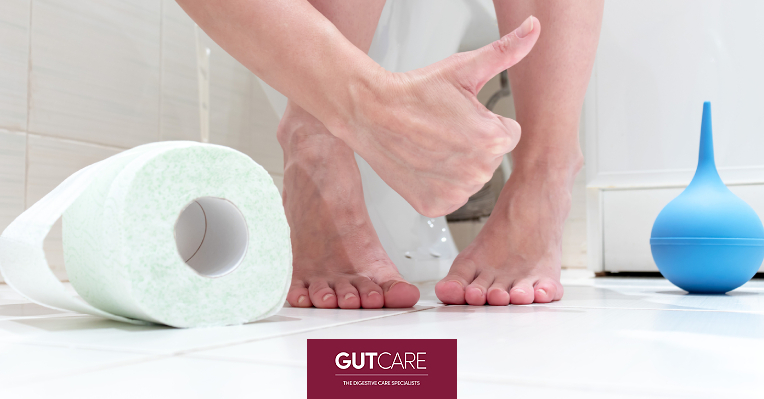Maintaining Regular Movement: Using Enema Safely & Its Risk

Constipation can be a real pain in the butt (no pun intended), and when things get a little too backed up, it can be a debilitating affair. Often, when the situation becomes problematic, an enema is recommended. However, what is an enema, and is it safe?
In this article, we will dive into everything you need to know about an enema, including the benefits and risks of using it, how to use it safely, and when it is advised to visit your nearest gastroenterologist.
What is an enema?
Enemas are liquid solutions containing a mild laxative, mineral oil, salt, and water that help to relieve constipation, clearing and cleansing the colon. Most enema kits are available over the counter. They help to soften the stools that are causing constipation, maintaining regular bowel movements.
However, in addition to relieving constipation, enemas are used for other medical purposes too, such as:
- Preparing for a medical procedure or examination, such as an X-ray or a colonoscopy
- Providing electrolytes and fluids when you are not able to drink and are feeling dehydrated
- Administering medications when you are not able to consume them orally
What is constipation, and why do you need to take it seriously?
Constipation is an irregularity with bowel movement. It is typically diagnosed when you visit the toilet less than three times weekly or require more strain when clearing your bowel. Constipation is caused by the lack of exercise, fluids, and dietary fiber.
While occasional constipation is fairly normal and harmless, it can result in severe consequences if left unattended, such as bowel obstructions, anal fissures, and haemorrhoids. Hence, it is vital that you make regular gastroenterology visits to ensure the health of your gut before something as minor as constipation becomes detrimental.
Some constipation symptoms you need to watch out for include a blockage feeling at the rectum, the feeling that your bowel is not completely cleared, pain and straining when passing stools, as well as lumpy, dry, or hard stools.
Potential benefits of enemas
Enemas help clear your constipation and bowels. While there are some that use it for other “health benefits”, such as removing heavy metals and toxins from their body and improving skin health, blood pressure, and blood pressure, there is limited evidence to prove its effectiveness in other areas other than relieving chronic constipation.
Potential risks of enemas
While enema is certainly helpful in relieving constipation, it is not without any potential side effects and risks. As such, you need to take specific precautions when using them. Some risks and side effects include:
- Dependence: Using it too often may cause your body to rely on it, resulting in your body’s inability to poop unless you use it.
- Damage to the anus and rectum: It rarely happens, but if the enema is pushed into your body too hard or if you have underlying medical conditions, it can result in the tearing of the rectum or colon walls.
- Infection: A dirty enema can result in contracting a potentially dangerous infection.
- Dehydration: It may interrupt your body’s natural balance, disturbing your gut microbiome and throwing off your body’s electrolyte balance, causing your body to lose too much water.
- Irritation: Improper use of enema can cause discomfort and soreness.
How to use an enema safely?
If you are self-administering an enema, it is vital to ensure that the tools are sterile and kept clean. Here are some tips to educate you on the safe use of enemas.
First, check with a medical professional to ensure that an enema is the best solution for your constipation. If it is, be sure to read the guide that comes with your enema kit. Ensure that you have everything you need for the process, such as a lubricant, gloves, and a clean towel. Make sure you wash your hands and wear gloves at all times during the process.
After which, lube the tip of the enema and gently insert the nozzle of the enema into your anus. Squeeze the liquid out, leaving the enema inserted for the recommended time. It is best to do this in the toilet, as you will poop shortly after administering the enema. Once you are done, clean up well and throw away everything that was used.
Safe alternatives to enemas
Enemas should always be considered as a last resort. You should prioritise other less invasive solutions before enemas. Some safe alternatives are probiotics, establishing a regular pooping routine, laxatives, regular exercise, and consuming lots of fibre and water.
Conclusion
Enemas are beneficial when you are conducting a major medical examination, such as a colonoscopy, or when you have been constipated for a long time. However, with any medical procedure, it does come with potential risks. Hence, always check with your doctor before getting an enema.
GUTCARE is a digestive care specialist that takes care of everything gut-related, from IBS symptoms to stomach pains. We also provide a wide range of services, such as gastroscopy, colonoscopy, and endoscopy.
Click here to make an appointment with us today!

HAVE AN ENQUIRY?
You may also send in an enquiry via our online form if you have questions pertaining to your visit or consultation.

FIND OUT MORE ABOUT OUR DOCTORS
Unsure of which doctor to speak to? Take a look at our doctors’ profile to find out more.




